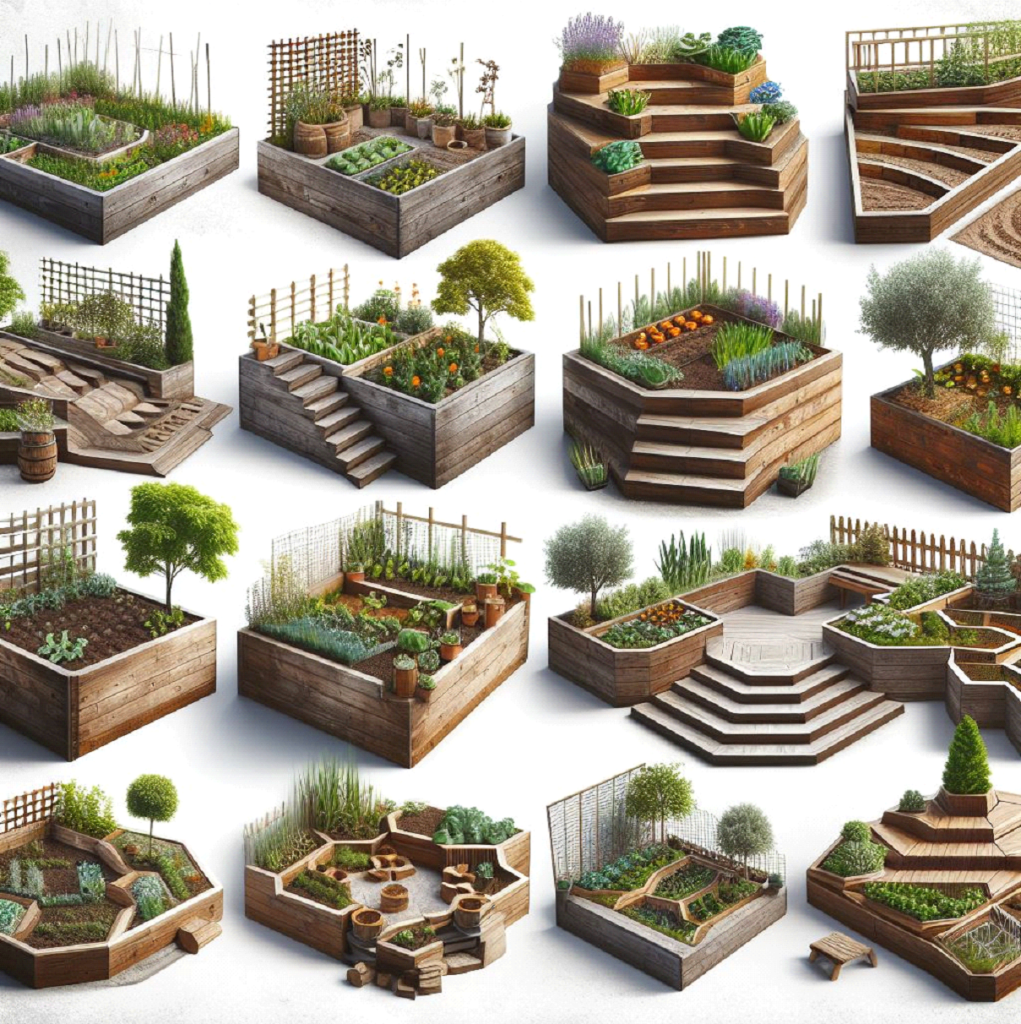Raised garden bed designs
With more gardeners reported to prefer the added ease and fruitfulness of raised garden beds, it’s not surprising that these designs have gained popularity in recent years. These escalated bedding plots provide multiple advantages, such as increased drainage and soil quality, better accessibility, and having control over weeds. Whether you are an experienced gardener or just somebody who recently took a dip in the gardening pond, adopting raised garden bed designs into your garden will change your gardening experience from black and white to color TV.

Below is a snapshot of raised garden bed designs.
Front lawn garden planners are this raised planting bed type that is built vertically above ground level of between six and three inches. These types of structures can be constructed by using different materials, such as wood, stone, brick, or some other recycled materials like plastic or metal as well. The garden bed raised above the ground gives you a determined area with a controlled environment wherein your plants can flourish.
The Advantages of Raised Garden Bed Designs
Increased running length and greater soil quality One of the biggest benefits of elevated garden beds is their great ability to drain water. The raised building also clogs the water, where the excess moisture can evaporate and decrease the chance of root rotting and other moisture-related problems. Moreover, your role as a gardener entails elevating the soil texture to desired levels, thereby ensuring that the components available in the mixture are unique to satisfy the requirements of the plants.
Two Main Factors: When it comes to raised garden bed designs, comfort working at an average-level height is gained, so bends and knees are less frequently needed. It is an additional method of assisting people who have movement issues or back pains to garden and ultimately reduce the stress experienced by delaying this activity. Additionally, the in-situ nature of the raised beds eliminates much of the tilling requirement or time for soil preparation, which saves effort as well.
Weeds and Pest Control Raised garden bed plan designs fix a growing space, which in turn limits weed growth and makes it simpler to view and eradicate unwanted plants. Furthermore, the raised bed can serve as a pest-trapping area, repelling slugs or snails, as they tend to have a difficult time getting to this vicinity.
Set up your raised garden beds.
The general outline could be rectangular, square, or irregular, such as circular or hexagonal shapes. Decide whether the dimensions of a raised garden bed will be shaped based on the plants you plan to grow, and allow the plants enough height and width for their growth and maintenance.
Reptiles The common materials to use in DIY raised garden beds are wood (cedar, redwood), stone, concrete blocks, or recycled materials such as plastic made from recycled lumber or metal. While keeping in mind the item’s durability, cost, and looks as you select materials,
Soil Structure The most critical advantage of raised garden bed patterns is that you can control the soil profile. Prepare a nutrient-rich potting medium by mixing topsoil, compost, and organic minerals. Use various techniques for soil pH adjustment and nutrition levels, considering individual plant needs for the best growth.
Slope and Proper Irrigation Good drainage is indispensable for the success of raised garden bed projects. Seal the bed at the bottom with gravel or other drainage materials to avoid over-saturating it with water. Similarly, installing a drip irrigation system in the form of an overhead tank or a soaker hose will guarantee the availability of water even during dry seasons.
Aesthetics and functionality Raised garden bed designs mean the possibility of creating something like a small piece of art, and for this reason, they are very popular. Adding trellis, obelisks, or decorative edges can help you beautify the plaque. Also, place your beds in such a manner that they will receive adequate sunshine, which will enable plants to grow faster.
Planting and maintenance
In this regard, be creative and apply companion planting methods that will make the most of your space and repel pests.
The change in the place of plants encircles the season. One can implement the crop rotation practice by moving crops to different places within their raised garden bed each season. This reveals an important way through which soil nutrients become replenished, thereby preventing soil-borne diseases from getting out of hand.
Planting through mulch: lay a layer of organic mulch (bark or straw) to keep the moisture in, suppress the weeds, and regulate the soil temperature.
Watering and Fertilizing: Soil Water levels and water your plants when they seem very dry but not overwatered. Organic fertilizers or leachates should be incorporated from time to time to replenish the nutrients for the growing season.
Conclusions about Raised garden bed designs
Unlike other garden-raised bed designs that are both functional and adaptable, it is also a fantastic option for gardeners at all levels. All these planting boxes may be used together with your landscape so that you can achieve a variety of flowers or herbs to reap and, at the same time, reduce gardening difficulties.

Αφήστε μια απάντηση